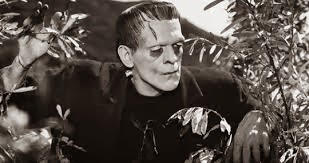Why is the Venus De Milo considered beautiful as a dismembered torso, and a disabled person considered repulsive? Why is one eroticized as a symbol of feminine beauty, and one not? Author suggests that this is about the nature of the SUBJECT rather than the qualities of the OBJECT. More about the OBSERVER than the OBSERVED.=DYNAMIC REPRESENTATION IN CULTURE.
- Informed by Foucault: "Normals" have the power to determine the GAZE which is placed upon them.
- person with disabilities has only his force or personal will.
Why is this bifurcation between normal and disabled in culture?
- cultures use a process of "splitting" dividing things into good/bad, purity/contamination, raw/cooked (in anthropological terms these binary oppositions allow us to make meaning in culture in simple, overt terms. We internalize this process and expand on it when encountering DISRUPTIONS TO OUR VISUAL FIELD (like when we encounter a situation of disability).
- SPALTUNG
- see good and bad bodies and good and bad body parts
- psychological explanation
- we make disabled/abled, good body/bad body…for fear of what we know, which is that no body is complete, and all bodies are at risk for such deformation and imperfection. It is a rebellion, a protection of our sense of normalcy.
- INDUSTRIALIZATION
- ties ability to productivity
- code body parts with meaning and associate their impairment with certain other disfunction/meaning
- breast removal: loss of femininity
- hearing loss: aging
- foreskin removal: cleanliness
- Medusa is an allegory for our encounters with the disabled.
- we are drawn to look at what we cannot (turned to stone-frozen)
- monstrosity (as a visual field) in the eyes of the normal person
BEAUTY versus IMAGES OF IDEAL SEXUALITY???????
- the NUDE: a form of art rather than the subject of art
- "the body reformed" (Clark)
- part of a set of idealized conventions
while some nudes may be MALE, when we think about the nude in western culture why we think about is the FEMALE form. more than any other form, the FEMALE FORM represents ART!
- venus is a masculine way of fashioning the female body (see Botticelli above)
- venues are never old, subject to bodily functions, pregnant (except prehistoric venus), or other than idealized images.
THE SESSIONS: View the Film
Sex and disability…how comfortable does this make us? Or uncomfortable? View the film and be prepared to discuss it in class.
MOVIES AS VEHICLES FOR IMAGES OF THE BODY
- films enforce the normal body but through a strange process
- see NORMAL IDEAL on screen (new concept apart from the ideal (venus) body)
- commodified body of eroticized male and female body (fantasy) replaced the venus
- voyeuristic nature of the media allows us to see the body in ways that we are not allowed that are taboo.
- nudity
- disability
- sex
- violence
- VIEW BOXING HELENA
- how does the author discuss this film as an example of our cultural ideas about disability and its incompatibility with sexuality?
- Why is someone in a wheelchair not sexy????
- male?
- female?
Peter Freund: BODIES, DISABILITIES & SPACES
- disability can be viewed as a physical impairment or a SOCIAL/CULTURAL impairment.
- not being able to….
- individuals with DEVIANT BODIES which are not easily accommodated in normal social settings/spatial arrangements
- disability is NOT the same as impairment 9BEING TOO TALL, SHORT OR FAT FOR EXAMPLE)
- THE CATEGORIES ARE SOCIALLY DEFINED AND CHANGE OVER TIME, JUST AS THE PEOPLE WHO ARE IN THESE CATEGORIES CHANGE
Georges Canguilhem: MONSTROSITY AND THE MONSTROUS
- a monster is a LIVING BEING
- monstrosity is the "foil" it is the counter to "life" (rather than "death")
- medieval times: Monstrsity was the result of the violation of sexual rules of endogamy and a mark of the desire to pervert (undermine) the correct ways of creatures.
- without discretion
- from a "carnival of the Animals"
- Christianity of the time saw monstrosity as human's deliberate violation of the "great chain of being" of "messing with God's plan"
- 19th century definitions
- monstrosity is the fixation of the development of one organ at a stage that the others have surpassed. -EPIGENISIS
- this is not about anomaly but about variety of forms
- TERATOLOGY: science of classification of forms
- normal run "off course"
- caused by obstacles to development











No comments:
Post a Comment